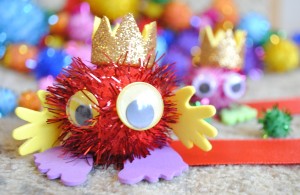I was the kind of Sunday School kid who actually liked being given homework along the lines of ‘Learn all the books of the Old Testament and recite to me next week’. There were gold stars waiting for me at the end, after all…
But, once a bit older, I did wonder what point there is in memorising Bible books. OK, it helps us get around our Bibles faster, but everyone seems to use digital Bibles these days anyway. Is it just an exercise to separate the really eager from the not-so-eager?
And then I realised the importance of teaching kids the ‘Big Picture’ of the Bible. It’s not just a collection of easily packaged stories about Giant-slayers and Kings and Princesses, but God’s Word to us, telling us who He is, who we are meant to be and where we are going. And to get that Big Story, kids need to understand how all the little stories fit in.
Learning the books of the Bible can be part of that. When we understand how the different books fit together in categories (Law, Prophets, Letters, etc.) we immediately see the bigger picture of the Bible, and learning the books in order allows us to grasp the general progression of God’s plan from Creation to Jesus to New Creation.
So. That’s all very well. But getting kids to recite the Bible books weekly sounds a little old-fashioned, and well… boring. Thankfully, there are hundreds of great ideas our there on the internet, including songs and, as I’ll focus on now, card games.

I found the cards pictured here on the Kids Sunday School Place at http://www.kidssundayschool.com/362/printables/bible-cards.php. They offer a free printable download of all the Bible books and the categories (Law, Prophets, etc.), and also some great ideas for group games using them.
I adapted some game ideas from there, and from other sites, and thought up a few of my own. (It’s quite possible someone else has already thought these up somewhere.) I’ve tried to focus them in a way that will actually help kids remember over a few weeks playing the different variations:
The basic game is to split the group into two teams (with two sets of cards), and for the teams to race to complete the ordering of the cards.
Variation one (introduction): split the cards up into Old and New Testament as quickly as possible. This one is good for younger ones, as well.
Variation two: put the cards in the order they come in the Bible (either the whole Bible or Old or New Testaments separately) as fast as possible. Give someone in each team a Bible so they can check the order for the first few times. Then take it away after one or two games.
It would be good to repeat this once a week over a few weeks to get it ‘stuck in their memories’.
Variation three: arrange the cards under the correct category heading (Law, Prophets, Letters…) as fast as possible.
Variation four: once they’ve got a good grasp of the order of the books, give each team member one book card (just pick at random covering the whole Bible or Old or New Testament; don’t worry if you skip books out), and then ask the team to line themselves up so that the books they are holding are in Bible order. As, usual, as fast as possible to beat the other team!
Variation five: randomly divide the Bible books cards between a team, splitting the cards equally between them (so for the whole 66 Bible books, a team of 6 would get 11 cards each). Then they have to put all the cards down as fast as possible in order – so the person with Genesis has to go first, then the person with Exodus, then the person with Leviticus and on and on until Revelation. Again, it’s a race against the other team! Everyone really has to pay attention for this one!
I’m sure there are plenty more variations, but those will get me by for a while with my class, and I hope you find them helpful for inspiring you, too.





